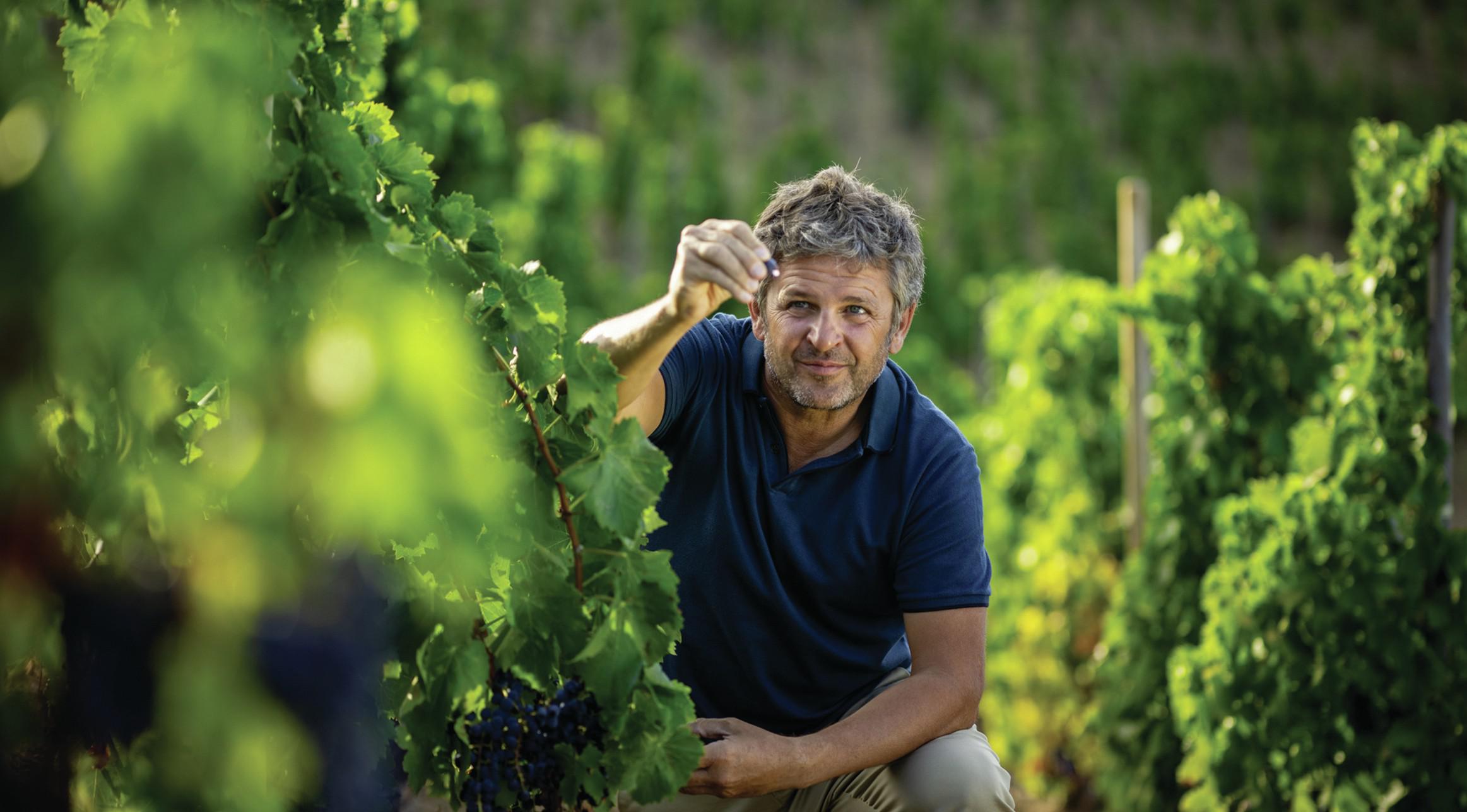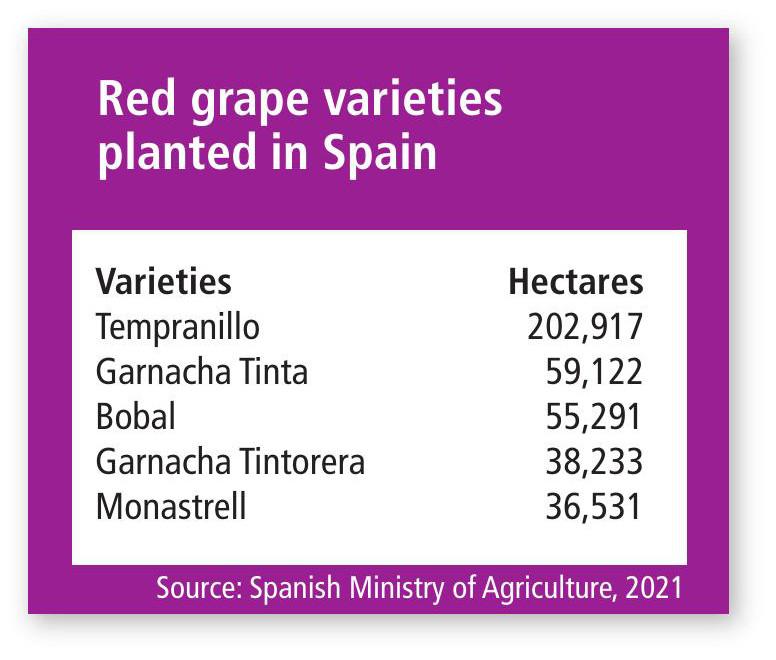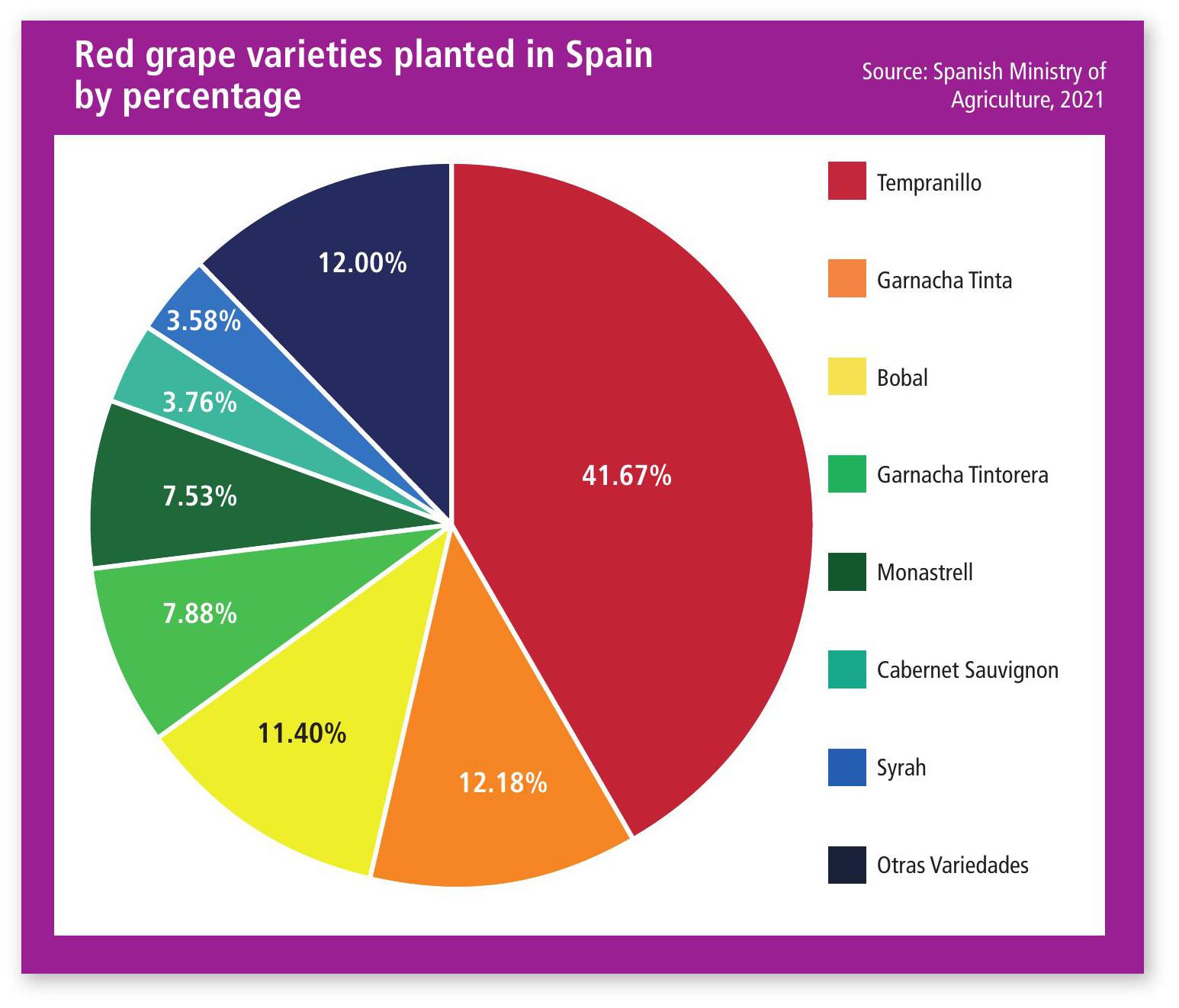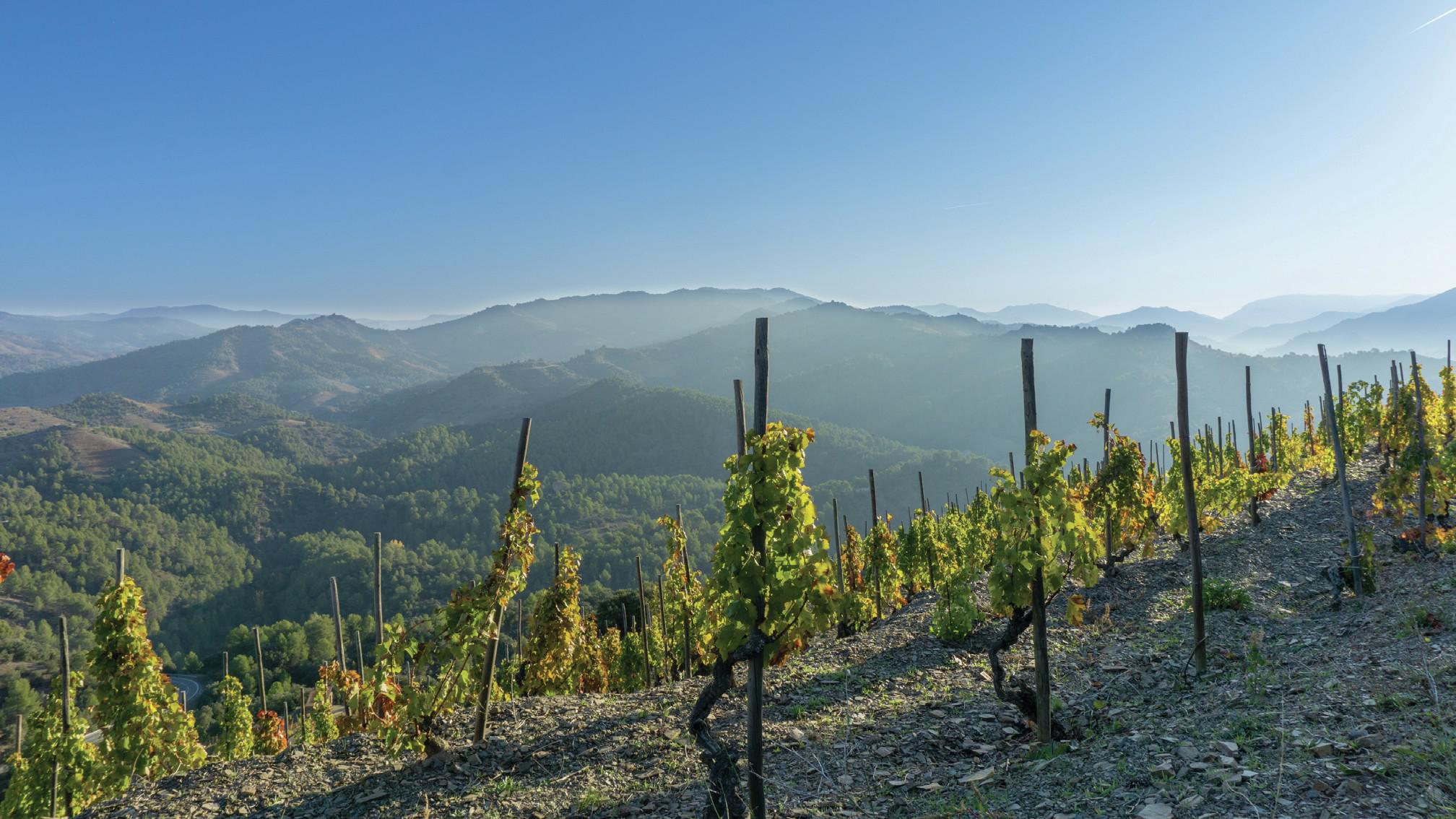This website uses cookies so that we can provide you with the best user experience possible. Cookie information is stored in your browser and performs functions such as recognising you when you return to our website and helping our team to understand which sections of the website you find most interesting and useful.
Spain’s ‘chameleon grape’ is becoming a national treasure
Able to thrive in a diverse array of climates and terroirs, the ever-adaptable Garnacha is enjoying a renaissance in Spain, as winemakers and consumers fall in love with its elegant charm, Lucy Shaw discovers.

Once derided as a workhorse grape destined for rustic reds offering little in the way of finesse, Garnacha has undergone a glorious renaissance in Spain, and is now the source of some of the most captivating and compelling wines in the country.
As palates around the world move away from the rich, ripe blockbusters of the past towards fresh, vibrant, food-friendly reds, Garnacha is perfectly placed to capitalise on the trend, with approachable, high-acid expressions that show off Spain’s lighter side.
While Tempranillo remains the queen bee in Spain, accounting for just under 42% of red grape plantings in the country, Garnacha recently overtook Bobal as the second most planted red variety, with nearly 60,000 hectares under vine.
Thought to have originated in Aragon in northeast Spain, the first record of Garnacha appeared in 1513, when it was referred to as ‘Aragones’. Widely planted in Spain thanks to its ability to flourish in an array of terroirs, Garnacha hotspots include: Navarra, Rioja, Campo de Borja, and Cariñena.
The emergence of Priorat on the world stage in the early 1990s helped to elevate the grape’s status, and the top examples from the region, featuring old-vine Garnacha planted in mineral-rich llicorella soils on terraced hillsides, bear a resemblance to the wines of Château Rayas in the Rhône, which are considered to offer the purest expression of Garnacha on the planet.
At the forefront of the revolution in Priorat is Alvaro Palacios, who has been increasing the proportion of old vine Garnacha used in his top wines – L’Ermita and Finca Dofi – to bring freshness and vitality to the party. Passionate about the grape, Palacios believes Garnacha is a perfect transmitter of terroir, and reflects the nuances of the soils and microclimates in which it is grown like no other grape in Spain.
SOLAR ESSENCE
Mark Andrew of wine-focused London restaurant group Noble Rot, which has sites in Fitzrovia and Soho, and a soon-toopen sibling in Mayfair, believes nailing the right picking date is crucial to preserve acidity while capturing the solar essence of Garnacha in Priorat.
“Growers like Alvaro Palacios, Terroir al Limit, and Nin-Ortiz have harnessed the generosity of the climate while keeping the core of intense dark minerality,” he says. “Priorat’s wines will always have ripeness, presence and stature, but the best examples have the purity of fruit and mineral clarity to match.”
But it’s not only in Priorat that old-vine Garnacha has found a happy home. Giving the region competition on the fine wine front is the mountainous Sierra de Gredos, west of Madrid. Spearheading the Gredos Garnacha movement is Château Rayas obsessive Daniel Landi, of Comando G, whose fresh, lively, cherry-scented reds grown on granite sell for over £250 a pop. Infused with energy and elegance, and boasting a distinct acid presence and a stately structure from the use of wholebunch fermentation, sommeliers the globe over fight to get their hands on the precious few bottles he makes.
“Landi, who grew up surrounded by the old Garnacha vineyards of the Gredos Mountains and took his cue from the wines of artisanal producers like Rayas and Bonneau, is proving that Garnacha can produce beautiful wines of incredible finesse and complexity,” enthuses Andrew.
“The best examples from Gredos are open-knit with silken tannins and amazing purity of red berry fruit. They have an ethereal nature, amplified by their mountain freshness. The singlevineyard old-vine expressions made by Comando G are among the most exciting wines in the world, and leave me in no doubt that Garnacha is capable of making world class, terroir-driven wines.”

Leading the way: Alvaro Palacios is at the forefront of a Garnacha revolution in Priorat
In Ribera del Duero, where the mercury can hit 40ºC in the summer, Danish winemaker Peter Sisseck is capturing freshness in his ‘third’ wine, Psi, through a higher proportion of Garnacha in the blend, which helps to lower the pH of Tempranillo, and give it a welcome lift.
Having once thrived in Ribera, most of the Garnacha in the region has been uprooted to make way for Tempranillo, or ‘Tinto Fino’ as it’s known there, but Sisseck is keen to put the spotlight back on Garnacha through a single-vineyard expression, which is in development.
Garnacha is also front of mind at Entrecanales Domecq e Hijos, which recently upped its plantings at its Viña Mayor estate in Ribera. The group’s wine director, Almudena Alberca MW, believes the grape is one to watch in Spain.
“Garnacha has a long growing cycle and a low pH, so we see it as an interesting variety for the future,” she says. “It’s very adaptable, and can thrive in a variety of soils and conditions.”
At Bodegas LAN in Rioja Alta, Tempranillo rules the roost, but Garnacha plays a vital supporting role in the estate’s blends. “La Virgen is a tiny, 2ha Garnacha plot within our Viña Lanciano estate that produces well balanced Garnacha with great varietal character to add lifted aromatics to our wines,” says LAN’s head of marketing, Alberto Saldón. “The Garnacha we use from San Vicente de la Sonsierra, meanwhile, brings great acidity to our wine blends.”
Fellow Rioja Alta estate Marqués de Cáceres has been researching its old-vine Garnacha for the past decade to produce blends with lifted acidity and great ageing potential. CEO Cristina Forner, who works with old-vine Garnacha that has been grown at altitude, believes the grape will play a vital role in Rioja’s future as the region becomes even warmer.
“Garnacha has proved very capable of enduring drought, as was the case in 2022, which was one of the driest vintages in Spain in the last 500 years,” she says.
In Rioja Alavesa, Jose Urtasun of Remírez de Ganuza has put his faith in Garnacha with the release of his first solo act, Iralia, sourced from old vines in San Vicente de la Sonsierra. Just 800 bottles were made from the debut 2020 vintage, which Urtasun describes as being “pure, delicate, floral and fresh, with notes of blood orange and summer fruits”. Allocations will be tight, and Urtasun is expecting his on-trade clients in Spain and beyond to snap up the wine “within days”, such is the anticipated demand for it. He believes the grape has a strong future in Rioja because of its heatand drought-resistant nature.
Javier Galarreta, CEO of Rioja Alavesa powerhouse Araex, agrees that Garnacha’s trump card lies in its impressive adaptability.
“Garnacha is a magnificent variety capable of producing extraordinary wines,” he says.
“It’s one of the most versatile grapes out there, able to adapt easily to different soils and climates. It thrives at high altitude, but climate change will allow Garnacha to adapt to environments that were unthinkable until recently.”


UNDISPUTED STAR
While Garnacha tends to play second fiddle to Tempranillo in Rioja Alta and Alavesa, the grape is the undisputed star of Rioja Oriental, where Alvaro Palacios produces tiny amounts of a singlevineyard expression called Quinon de Valmira, which costs upwards of £300 per bottle. First made in 2013, the Garnacha hails from a 3ha plot at Bodegas Palacios Remondo in Alfaro. Ruby red in colour, and ethereal in character, with notes of wild strawberries, tangerine peel and thyme, Palacios says it’s Rioja’s answer to Gevrey-Chambertin, and is excited to see producers coming back around to the charms of old-vine Garnacha.
Another flag-bearer for Garnacha from Rioja Oriental is Rodolfo Bastida of Ramón Bilbao, who makes two single vineyard expressions from the region, including high-end rosé Finca Lalinde under the Lalomba label. Bastida nurtures 30ha of Garnacha on the slopes of the Yerga mountain range, and believes the grape is fundamental for those seeking to express the distinct character of Rioja Oriental. He loves how the grape performs in high-altitude mountain conditions, be they in Rioja, Priorat, or Madrid.
“Higher altitude means more radiation from the sun, which matches perfectly with Garnacha’s late-ripening cycle,” he says. “You need to know what you want from Garnacha. When you do, you can produce wonderful wines with a delicious, lively character that reflect their origin, and offer an appealing mix of juicy fruit, floral flavours and vibrancy. At its best, Garnacha is the freshest face of the Mediterranean.”
Further northeast in Penedès, Miguel Torres Maczassek of Familia Torres loves the hedonism that Garnacha brings to his blends. “For the past decade we’ve been planting Garnacha in some of our vineyards across Catalonia,” he says. “It’s a very versatile grape that loves the sun and the Mediterranean climate. I’m convinced that Garnacha will become one of the ‘queen’ grapes in Spain, along with Tempranillo.
“It plays an important role in the new climate scenario because it copes very well with high temperatures and dry weather conditions.”
At the affordable end of the spectrum, bright and juicy old-vine Garnachas from Navarra, Jumilla, Campo de Borja, and Cariñena offer some of the best value wines in Spain for their quality.
In Campo de Borja in Aragon, Garnacha accounts for almost 60% of vine plantings, nearly half of which are old vine plots. With vines dating back to the 1890s, the region’s Garnachas Históricas Project aims to promote and protect Campo de Borja’s old vine patrimony while shining a light on its wines.

Elevation: the emergence of Priorat in the 1990s helped to popularise Garnacha
UK drinks supplier Kingsland Drinks is enjoying strong sales of its Campaneo old-vine Garnacha from Campo de Borja, which is flying off the shelves.
“In the semi-arid region, the bush vines are well adapted to producing lower yields, which allows bodegas to make exemplary old-vine Garnacha at a relatively low cost that have a lush red-fruit character, supple tannins and strawberry-scented richness, which pulls through on the palate,” says Kingsland’s wine-development director, David Gill MW. “The wines are often ready to drink early, meaning cash flow is improved by early release to market.”
In Navarra, Garnacha plays a starring role in the rosés from the region, which account for around 30% of its annual output, and are among some of the best Grenache-based pinks in the world. Both Garnacha plantings and single-varietal expressions are on the rise there.
“We are making the best Garnachas in our history,” reveals DO Navarra’s general manager, Elena Arraiza. “Hard work in the field and a gentle approach in the winery have allowed us to rediscover this variety and transmit its innate freshness and fruitiness in our wines, which are in great demand all over the world.”
Plantings are also on the up down south in Jumilla, where winemakers have been showing the grape more love of late.
“Producers are paying more attention to both single-varietal Garnacha and blends, with great results,” says DO Jumilla’s general secretary, Carolina Martínez Origone. “Garnachas from Jumilla are fruity, well balanced, and show varietal typicity. They work well as solo acts or as part of a blend with Monastrell.”
Trendsetting UK importer Indigo Wine has championed Garnacha-based lighter Spanish reds for years, which are now being embraced beyond Spanish restaurants by the likes of Sager + Wilde in Hoxton, Frenchie in Covent Garden, and Noble Rot in Soho.
“Spain has finally woken up to the appeal of Garnacha as a high-quality grape variety,” says Indigo’s Spanish wine buyer, Alvaro Ribalta MW. “In recent years we’ve seen a resurgence of regions that had been hibernating and incubating what has become an established movement towards making some of the best Garnachas in the world.”
Ribalta namechecks Gredos, the Sierra de Yerga in Rioja Oriental, Valdejalón, and Montsant as regions crafting outstanding expressions of the grape. He believes the beauty of Garnacha as a food-pairing wine lies in its versatility and diversity of styles.
“Sommeliers have plenty of reasons to get excited about Garnacha, not least because of the great variety of regions and producers in Spain that are taking the grape seriously and are making the best wines ever produced from it,” he says.
Garnacha will always be the younger sister of Tempranillo, but with Priorat and the Sierra de Gredos showing the dazzling heights the grape can climb to when placed in the right hands, and with producers throughout Spain now finally treating it with the respect it deserves, Garnacha has a bright future ahead.

